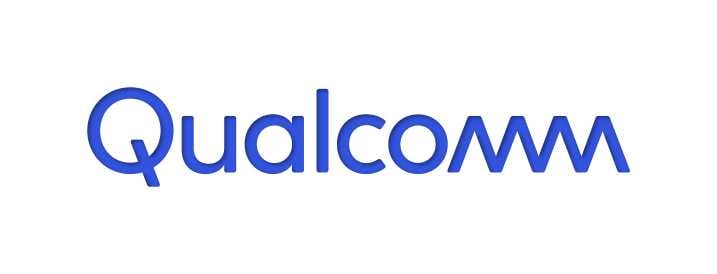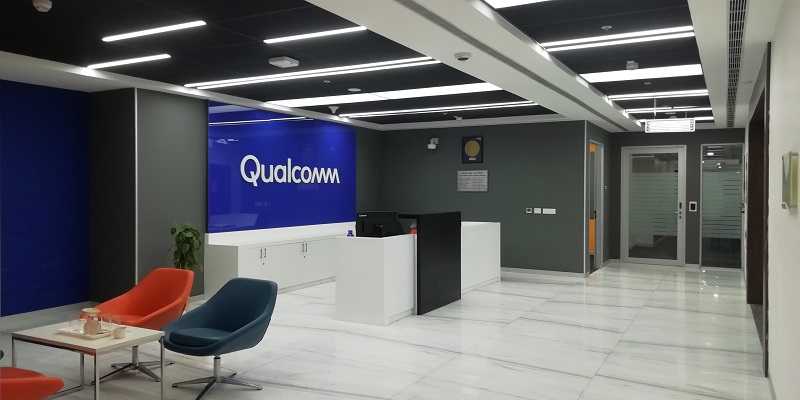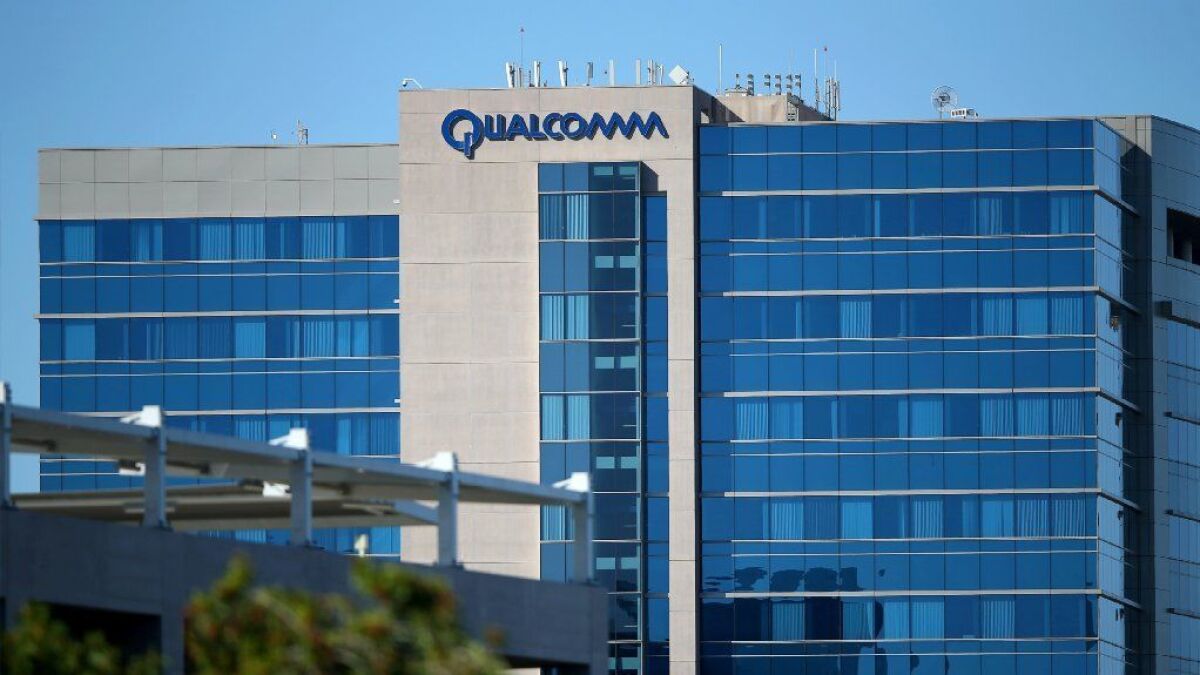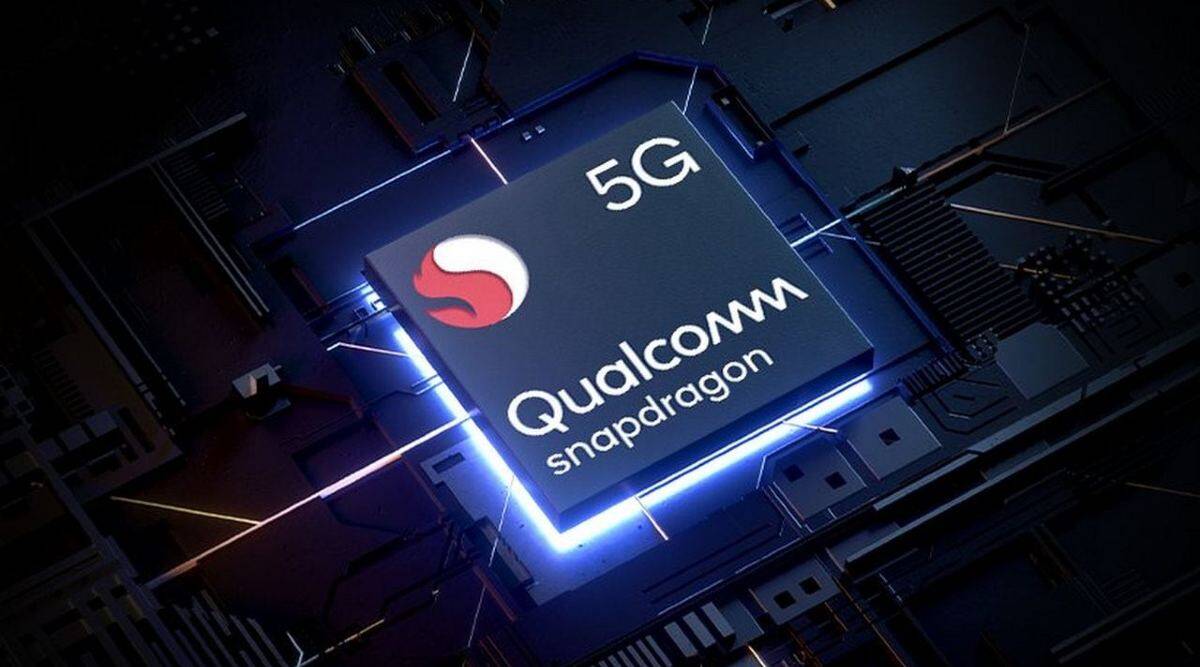Qualcomm Inc
Summary
- Qualcomm has a leadership in wireless connectivity, RF front-end, high-performance, low-power computing, multimedia, and on-device intelligence.
- Qualcomm technologies including 3G, 4G and 5G wireless technologies and processor technologies including high-performance, low-power computing and on-device AI technologies.
- Qualcomm has offices across 170 offices in more than 30 countries.

QUALCOMM (Nasdaq: QCOM, LSE: 0QZ3) is a global leader in the development and commercialization of foundational technologies for the wireless industry, including 3G (third generation), 4G (fourth generation) and 5G (fifth generation) wireless technologies and processor technologies including high-performance, low-power computing and on-device artificial intelligence (AI) technologies.
Recent Developments
LEAPMOTOR and Qualcomm Collaborations to Create Premium In-vehicle Experiences Cockpit Platform1
MAR 31, 2023; LEAPMOTOR and Qualcomm Technologies, Inc. announce that the companies have signed a non-binding Memorandum of Understanding (MOU) on strategic cooperation to further deepen collaborations in the automotive sector. The companies will strategically collaborate to create the new generation of intelligent cockpit product for LEAPMOTOR’s future vehicles based on the latest next generation Snapdragon® Cockpit Platforms from Qualcomm Technologies. LEAPMOTOR is expected to be one of the first automakers that utilize the platform, with the first LEAPMOTOR vehicle planning to adopt this solution to launch this year. As a part of the technology collaboration, the companies will also explore extensive collaboration opportunities on cockpit, automotive connectivity and intelligent driving with Snapdragon® Digital Chassis™ solutions for LEAPMOTOR's future vehicles.
Recent acquisition
Nuvia was acquired by Qualcomm for $1.1 billion (net of $174 million cash acquired) in March 2021. Nuvia had certain in-process technologies and was comprised of a CPU and technology design team with expertise in high performance processors, SoC and power management for compute-intensive devices and applications. Upon completion of development, Nuvia’s technologies are expected to be integrated into certain QCT products. Qualcomm recorded $885 million of goodwill and a $247 million in-process research and development intangible asset related to a single project. The company's results of operations for fiscal 2021 included the operating results of Nuvia since the acquisition date.
Veoneer was acquired by Qualcomm and SSW Partners for $4.7 billion in October 2021. The transaction closed on April 1, 2022. Total cash consideration paid in the transaction was $4.6 billion paid in respect of Veoneer’s outstanding capital stock and equity awards and amounts paid to settle Veoneer’s convertible senior notes (which were converted at the election of their holders into Veoneer common stock prior to the Closing Date).

Financial Highlights
Qualcomm’s revenues for the first quarter of fiscal 2023 were $9.5 billion. The company’s earnings before taxes (EBT) were $2.4 billion. Qualcomm’s net income for the first quarter of fiscal 2023 was $2.2 billion. The diluted earnings per share (EPS) for the first quarter of fiscal 2023 was $1.98.
Revenues were $44.2 billion, an increase of 32% compared to revenues of $33.6 billion in fiscal 2021, with net income of $12.9 billion, an increase of 43% compared to net income of $9.0 billion in fiscal 2021.
QCT revenues increased by 39% in fiscal 2022 compared to the prior year, primarily due to an increase in average selling prices and favorable mix toward higher-tier 5G products along with higher integrated circuit shipments in handsets, as well as higher IoT revenues.

Company Overview
QUALCOMM is a global leader in the development and commercialization of foundational technologies for the wireless industry, including 3G (third generation), 4G (fourth generation) and 5G (fifth generation) wireless technologies and processor technologies including high-performance, low-power computing and on-device artificial intelligence (AI) technologies. The company incorporated in California in 1985 and reincorporated in Delaware in 1991. The company operate and report using a 52-53 week fiscal year ending on the last Sunday in September.2
Qualcomm has a long history of driving innovation. Qualcomm has played and continue to play a leading role in developing system level inventions that serve as the foundation for 3G, 4G and 5G wireless technologies. This includes technologies such as CDMA (Code Division Multiple Access) and OFDMA (Orthogonal Frequency Division Multiple Access) families of technologies, with the latter encompassing LTE (Long Term Evolution) and 5G NR (New Radio), which are the primary digital technologies currently used to transmit voice or data over radio waves using a public or private cellular wireless network.
Qualcomm has three reportable segments. The company conduct business primarily through QCT and QTL, while QSI makes strategic investments.
QCT Segment. QCT is a leading developer and supplier of integrated circuits and system software based on 3G/4G/5G and other technologies for use in wireless voice and data communications, networking, computing, multimedia and GPS products. QCT’s integrated circuit products are sold and its system software is licensed to manufacturers that use its products in a broad range of devices, from low-tier, entry-level devices primarily for emerging regions to premium-tier devices, including but not limited to mobile devices, wireless networks, devices used in IoT, broadband gateway equipment, consumer electronic devices and automotive systems for connectivity, digital cockpit and advanced driver assistance and automated driving. The company's one technology roadmap delivers the latest network technologies across multiple product tiers and devices. This roadmap is the result of extensive collaboration with manufacturers, operators, developers, systems integrators, cloud providers, tool vendors, service providers, governments and industry standards organizations, as well as its years of research into emerging network standards and the development of integrated circuits. The company's roadmap takes advantage of new standards, while maintaining backward compatibility with existing standards. Qualcomm has leveraged and expect to continue to leverage the foundational technologies initially developed and commercialized for use in mobile handset devices, such as its core baseband modem and processor technologies and its other wireless connectivity products including Wi-Fi, Bluetooth and precise positioning technologies, to extend into product categories, industries and applications beyond mobile handsets, such as automotive and IoT.
QTL Segment. QTL grants licenses or otherwise provides rights to use portions of its intellectual property portfolio, which, among other rights, includes certain patent rights essential to and/or useful in the manufacture, sale and/or use of certain wireless products, including, without limitation, products implementing CDMA2000, WCDMA (Wideband CDMA), LTE and/or OFDMA-based 5G standards and their derivatives. The company grant licenses or otherwise provide rights to use its cellular standard-essential patents (including 3G, 4G and 5G) for both single-mode and multimode devices on a worldwide basis. The company also offer licenses to its cellular standard-essential patents together with other Qualcomm patents that may be useful to such licensed products for licensees that desire to obtain the commercial benefits of receiving such broad patent rights from it. While the company offer license rights to patents that the company do not have a duty or obligation to grant, those rights may be negotiated at its discretion. A significant portion of QTL’s licensing revenues is derived from licensees that have entered into license agreements that grant licenses under Qualcomm’s cellular standard-essential patents. The company's licensees manufacture wireless cellular products such as mobile devices (including handsets), other consumer devices (e.g., tablets and laptops), plug-in end user data modem cards and embedded modules for incorporation into machine-to-machine devices and certain other devices, connected vehicle units and connected vehicle modules used in automobiles, wireless access points, small cell wireless products, infrastructure equipment required to establish and operate a cellular network and equipment to test wireless networks and cellular devices.
QSI Segment. QSI makes strategic investments primarily through its Qualcomm Ventures arm that are focused on expanding or opening new opportunities for its technologies as well as supporting the design and introduction of new products and services (or enhancing existing products or services). Many of these strategic investments are in early-stage companies in a variety of industries and applications, including, but not limited to, 5G, AI, automotive, consumer, enterprise, cloud, IoT and XR. Investments primarily include non-marketable equity securities and, to a lesser extent, marketable equity securities and convertible debt instruments. In addition, QSI segment results include revenues and related costs associated with certain development contracts with one of its investees. As part of its strategic investment activities, the company generally intend to pursue various exit strategies for each of its QSI investments in the foreseeable future.

Business Overview
Qualcomm has a leadership in wireless connectivity, RF front-end, high-performance, low-power computing, multimedia, and on-device intelligence. The company's one technology roadmap scales its leading portfolio of essential innovations to expand its breakthrough solutions to support virtually every connected device across industries and sectors, including automotive and the IoT.
Snapdragon® mobile platforms are at the center of extraordinary experiences, including ultra-fast 5G and Wi-Fi connectivity, professional-quality image and video capture, desktop-level gaming, AI-accelerated capabilities.
In consumer IoT, The company is enabling next-generation experiences across PCs, XR devices, wearables, and consumer electronics. For industrial IoT, The company is helping its customers accelerate their digital transformation strategies to transform, optimize, and innovate their businesses by delivering end-to-end, ready-to-deploy solutions.
Worldwide Locations
Qualcomm started as an idea. In 1985, seven individuals met in a den in San Diego for the purpose of creating “quality communications.” Today its offices span across 170 offices in more than 30 countries.3
Major locations are:
- Brazil
- China
- France
- Germany
- India
- Indonesia
- Japan
- Mexico
- South Korea
- United Kingdom
- United States




